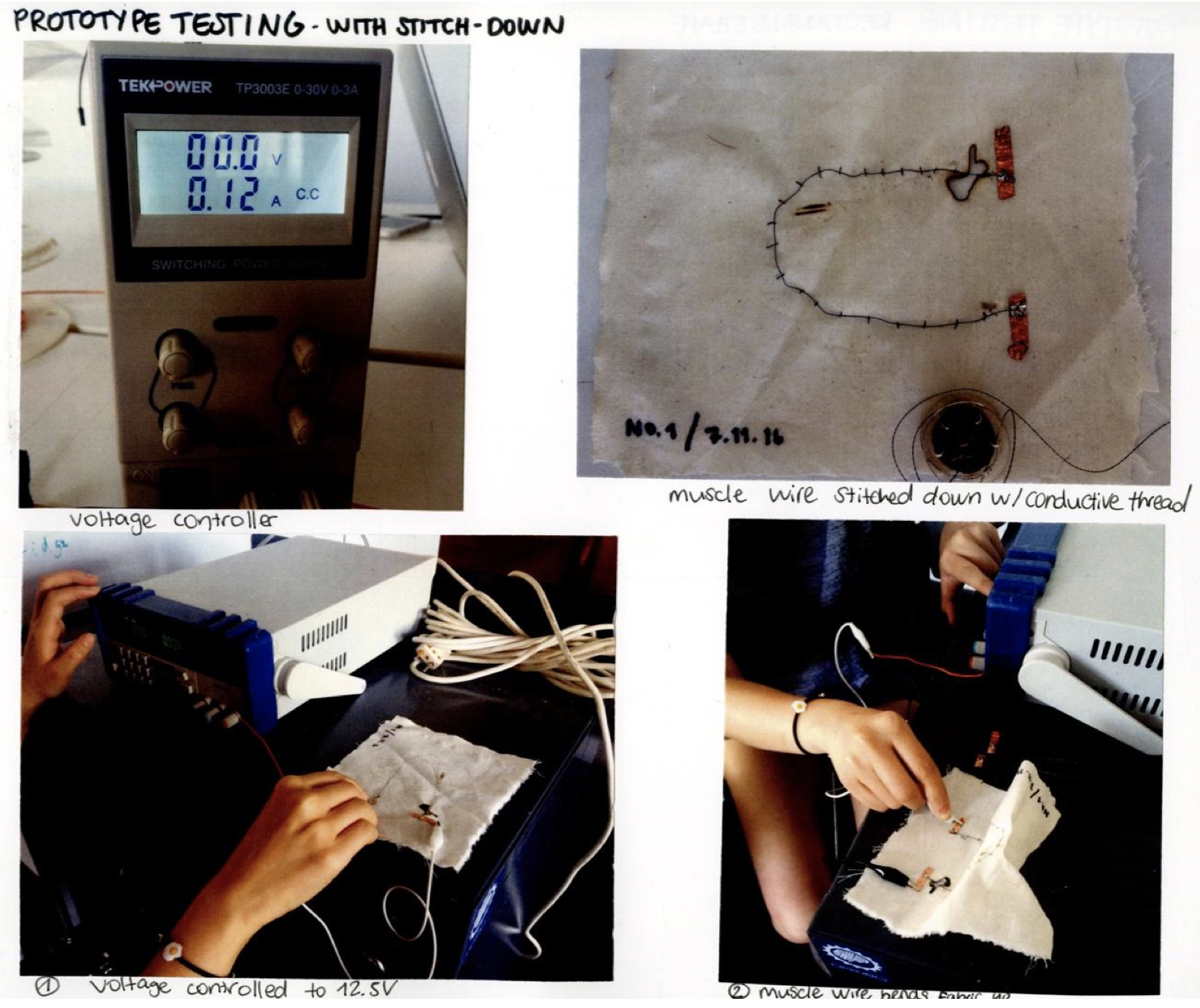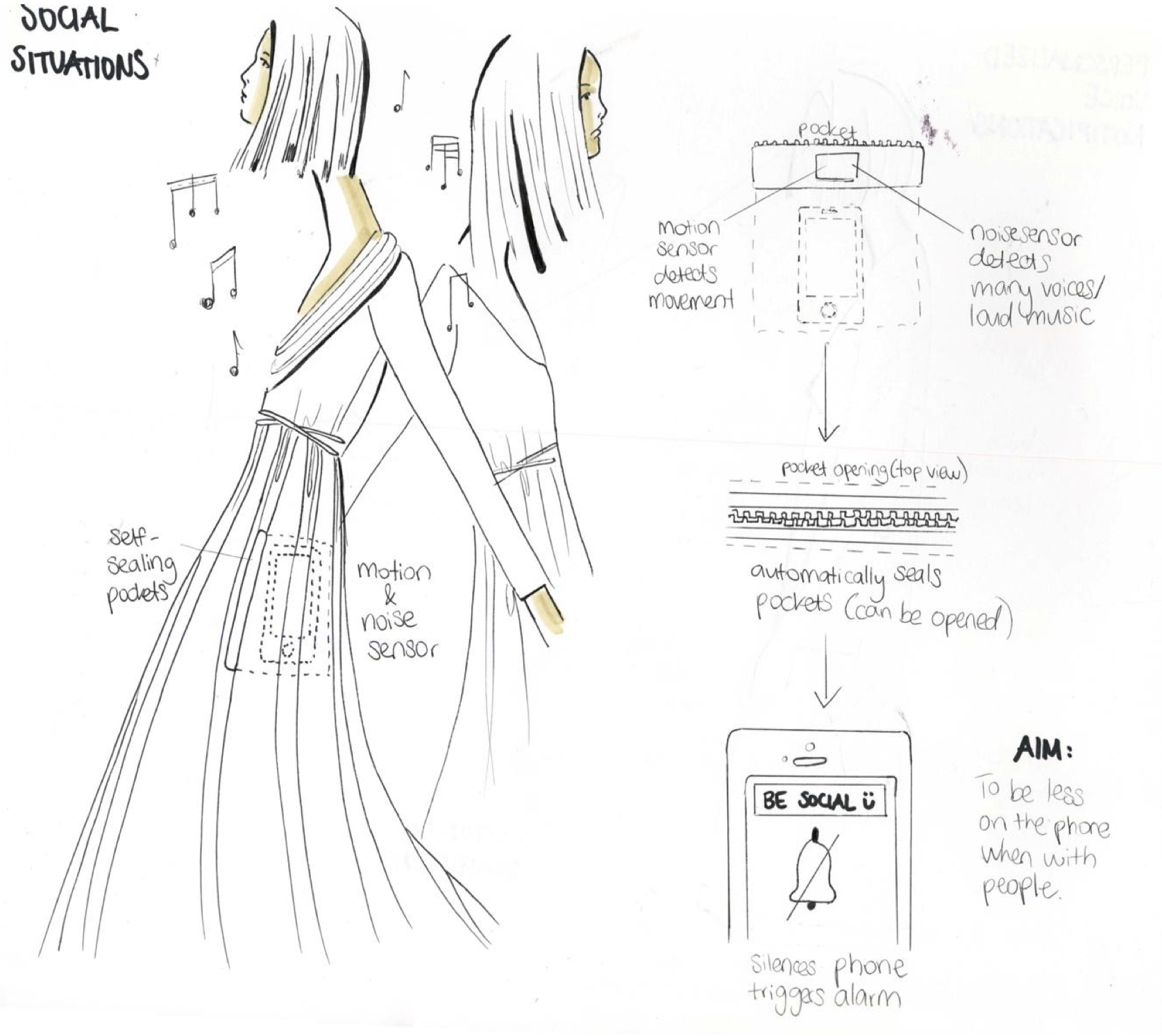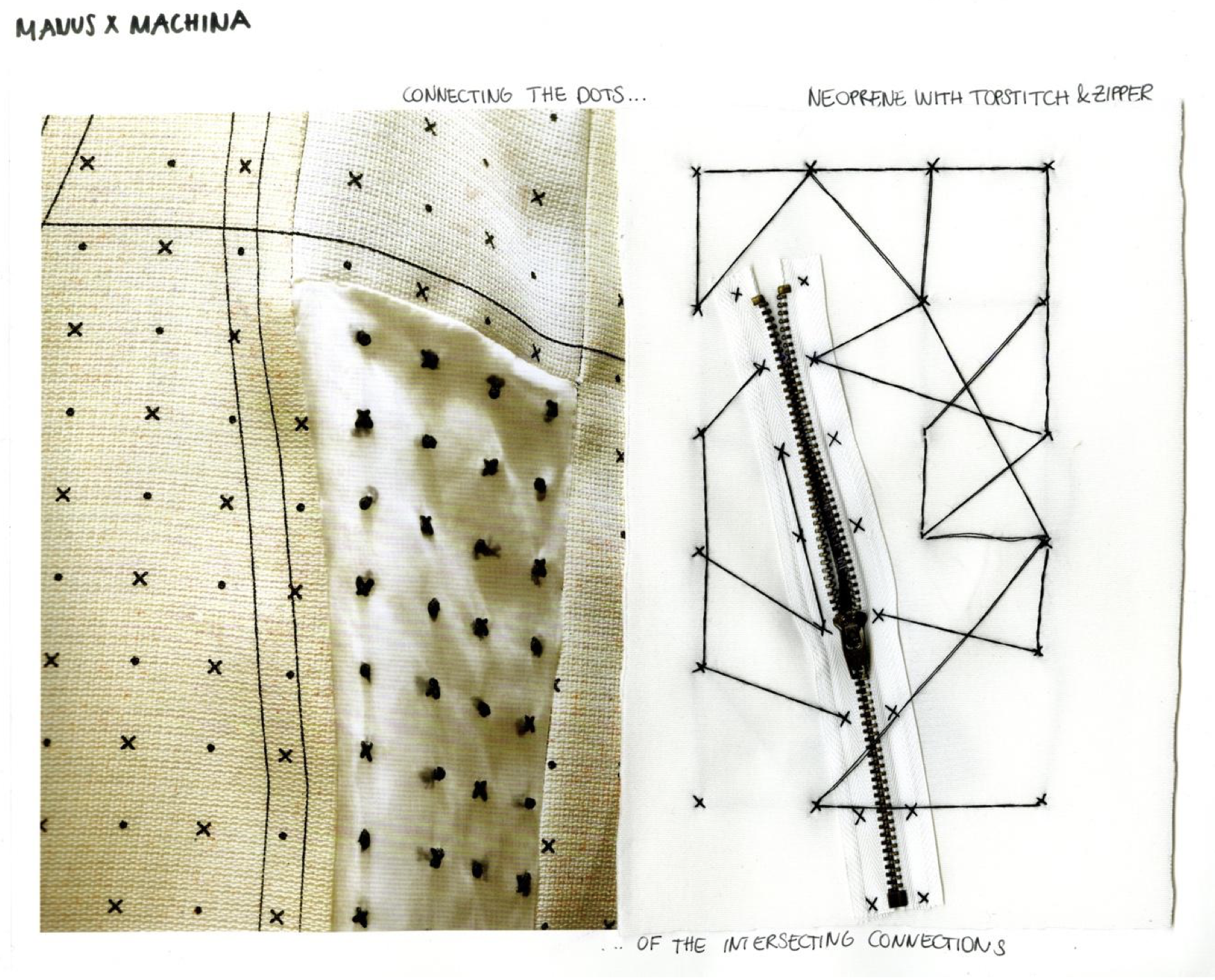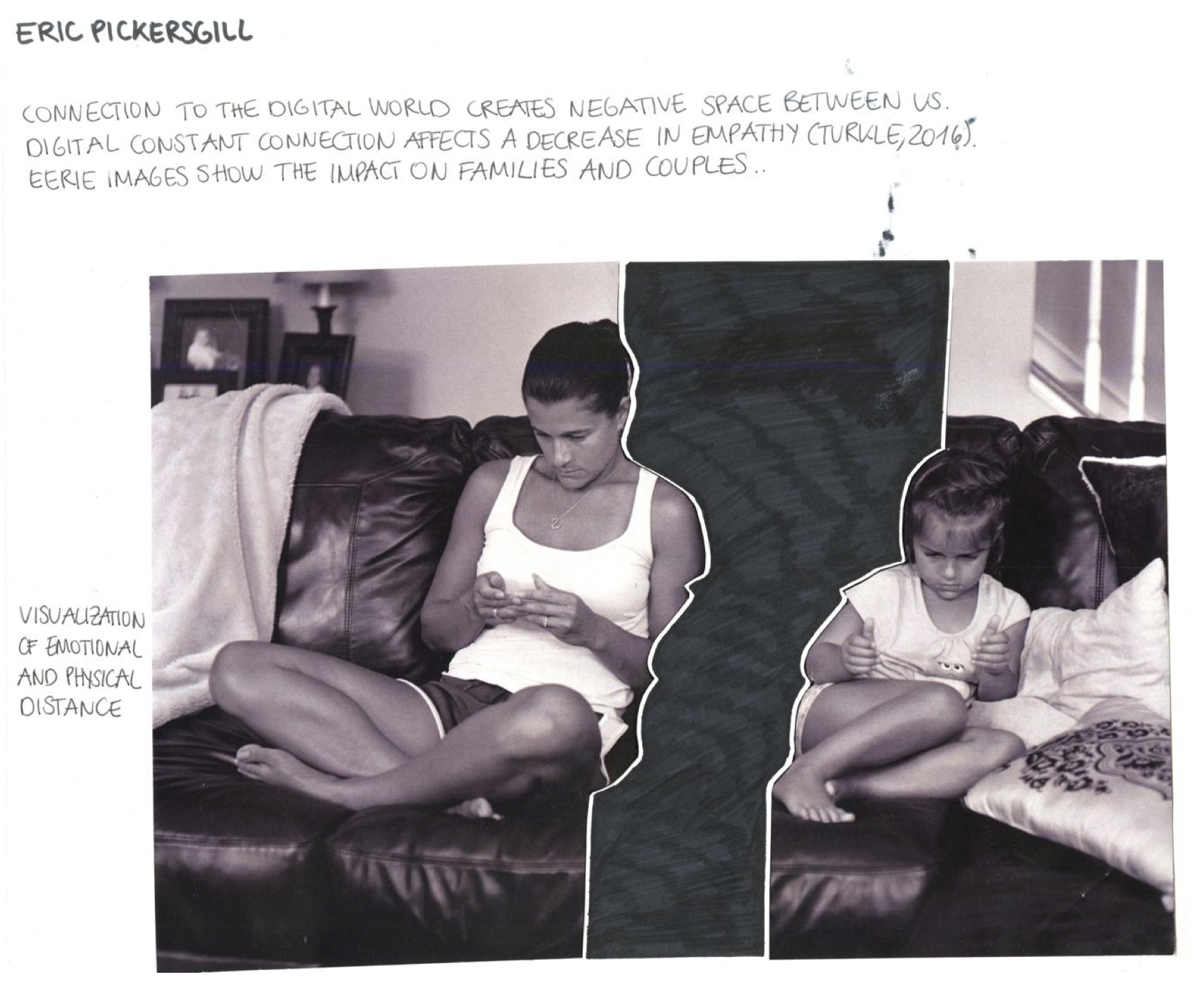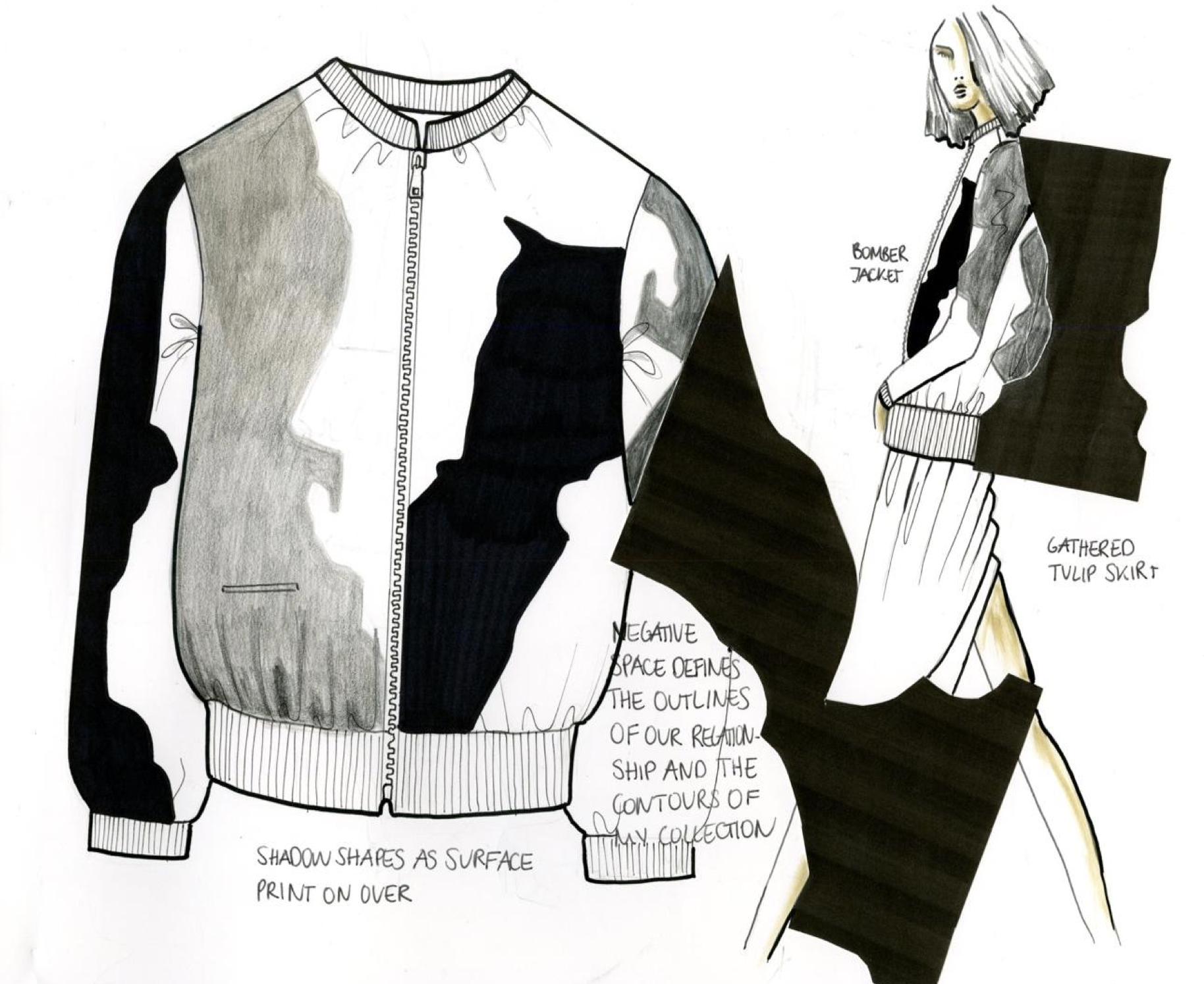The Influence of Communication Technology on Our Lives
The Influence of Mobile Technology on our Lives” represents the preliminary research and development of Jamileh’s thesis project under the guidance of her professor (and FSJ Co-Founder) Kim Jenkins for the Parsons undergraduate course, “Advanced Research Seminar” in 2016.
INTRODUCTION
In this article, I will explore the influence of technology on our lives. Specifically, I am investigating the alienating effect of communication technology on human individuals. The chosen topic of communication technology and smartphones in particular is a very personal one. It has come to my attention that communication technology has a profound influence on the lives of people, especially the younger generations. My hypothesis is that the increased use and reliance on gadgets such as smartphones creates a decrease in face-to-face social interaction and empathy, creating a world of virtual interactions and loneliness instead. My research includes in-depth interviews with females in their twenties regarding their dependence on communicational devices and developing a succinct idea for a wearable technology alternative. I visually represent this social alienation in a fashion collection by using the negative space created between two bodies of people on their phones. The objective is to incorporate communication technology as an integral part of fashion in a more obscure and less distracting way. For example, I created a pocket that is lined with RF Shielding Fleece. When a phone is inserted and the pocket is fully closed, this disables any notifications to reach the phone. In social situations, a noise sensor detects several voices in social situations and triggers the closure of the pocket. This results in muting the phone, indicated by blinking lights, allowing the wearer to fully focus on face-to-face interactions and increased mindfulness in conversations instead.
Furthermore, I address the main problems of wearable technology including repeatability, scalability, power sources and washability. Repeatability is achieved by creating a standard model that can be scaled and could enter mass production. Hardware is integrated into the garment in removable sections, which allows easy-care washability of the garment and the exchange of power sources. One of the main challenges of this undertaking is the outsourcing of the technical knowledge to incorporate communication technology into the garments. The in-depth research on social alienation and the physical effects of human dependence on communication technology inform the aesthetic of the collection and thus draw attention to the issue. In this article, I aim to answer the following research questions: How does communication technology influence the lives of females in their twenties? What challenges does communication technology create? And how can communication technology be incorporated into fashion to offer a less socially alienating solution? All in all, this project is designed to serve the human need of connectivity through fashion as an extension of our bodies. [1]
LITERATURE REVIEW
One of the most important books on this subject is Sherry Turkle's Reclaiming Conversation (2016). According to the author, the increased reliance on our gadgets, especially in social situations, has affected a decrease in empathy and creativity. Shifting our focus on the digital world instead of face-to-face interaction impacts our ability to read and respond to each other in real life. According to Turkle, this can become a serious problem for the younger generation that has been heavily relying on technology since birth. This astonishing realization sparked the idea of designing wearable technology to positively affect increased mindfulness in social situations.
I further deepened my understanding of the field by researching a pre-existing case study by Intervoice conducted in 2005 regarding people’s dependency on their smartphones. Specifically, the participants were denied using their phones for a whole day and had to subsequently report their experiences concerning their social behavior and emotional state, “blurring the distinction between real and fake” and “living a distanced and distracted life.” Astonishingly, six out of ten participants were afraid of losing their friends if they lost their phones.
METHODOLOGY: INTERVIEWS AND SITE VISITS
I was able to interview renowned experts in the field such as professor Aneta Genova, professor Sabine Seymour, industry expert Bradley Quinn, and well-established design developer Chaz Mee. Aneta Genova and Sabine Seymour were able to point me in the direction of current social trends and publications on the topic. It was especially interesting to hear about the many applications of technology in fashion and the social implications that can occur. Bradley Quinn (2016) noted in an interview with me that, “at the moment, communication technology is outside of us.... It is becoming a necessity. In the future, it will be like the air that we breathe. It won’t be an issue of logging on or connecting to have access to this information. It will just be part of who we are.” This forecast was very alarming to me as I thought about the socially alienating implications this might have. I immediately knew that with my thesis, I wanted to target the possible negative social effects of our increased incorporation of technology.
I conducted customer research interviews among females in their early twenties regarding their relationship with their phones, and it was very interesting to draw conclusions from overlapping statements. I found that most participants confessed to being heavily reliant on their gadgets. Many were annoyed by the fact that it distracted them from social situations and negatively impacted face-to-face interactions. According to 21-year old R.D., “Technology can be a gift, but if our generation isn’t careful about it, it’s going to very much ruin or harm the human experience all together because I think that we’re kind of forgetting how important communication outside of technology is.” Her statement sparked the idea of incorporating wearable technology into the garments that insured a more controlled use of mobile technology.
A site visit to the Metropolitan Museum of Art and their exhibition Manus x Machina was an incredible source of inspiration. It was evident that the most successful pieces were the ones that had the most commercial viability. In order for wearable technology to be the future of fashion, it needs to have potential to be produced on a large scale and be taken care of conveniently.
In addition, I came across two phenomenal photographers that hugely inspired further design development, Eric Pickersgill and Dennis Rito. Their sociological photography focuses on people completely absorbed by their phones and the eerie atmosphere this creates. I took this idea further by taking photographs of groups of people in Washington Square Park who seemed to be”“lost in their own world” while using their phones. One of the most interesting findings was that people in pairs did not seem to be bothered by the fact that their conversation was put on hold in awkward silence for up to thirty minutes while they were paying attention to their phones instead of their friends or partners.
PROPOSED DESIGN SOLUTIONS
The first step that I took was to outline the wearable technology that previously existed on the market. In particular, I paid attention to the mechanisms, functions and design features. I realized that most gadgets on the market focused on creating a solution to easier access of technology but there was hardly anything to be found that regulated more mindful use.
From there, I continued manipulating the found and self-created photographs of people on their phones. What stood out to me was the interesting negative space that was created between the bodies. I traced these shapes and then applied them to sketches of the female figure in several ways to create silhouette ideas. I then sketched the recurring bodily postures of people on their phones. Certain hand positions and arched backs for instance could be seen over and over again. These shapes then translated into garment ideas and construction details through collaging, sketching and draping on the form.
CONCLUSION
My thesis project culminated in a full fashion collection of six to eight looks. The highlights of the collection are interchangeable, modular pieces that include the aspect of wearable technology. The voice-sensitive pockets that close and shield phones from signals can be detached and reapplied in several different ways to different looks. This makes the collection versatile and gives the wearer the freedom to choose whether they want to use the technology or not. Overall, this aspect functions as a surprise to the viewer who only realizes there is a function to the collection after wearing it.
The aim of this collection is to provide an informed narrative that is based on both sociological data as well as visual research. The conveyed message is to beware of how much and to what extent we use mobile technology. By offering a regulating wearable technology solution, my customer is offered an alternative that integrates seamlessly into both her wardrobe and her current lifestyle.
Notes
[1] Bradley Quinn, Interview with Jamileh Nadelmann (Milan, April 14, 2016).
[2] Andrew Bolton, Manus X Machina Fashion in an Age of Technology (New York: Metropolitan Museum of Art, 2016). Buxbaum, Gerda. Fashion in Context (Wien: Springer, 2009).
[3] R.D. Interview with Jamileh Nadelmann (New York, June 8, 2016).
[4] "The Relationship With Your Phone," Online survey by Jamileh Nadelmann (April 5, 2016).
[5] Henrietta Thompson, Phone Book: The Ultimate Guide to the Cell Phone Phonemenon. (London: Thames & Hudson, 2005).
[6] Sherry Turkle, Reclaiming Conversation: The Power of Talk in a Digital Age (New York: Penguin Press, 2015).

